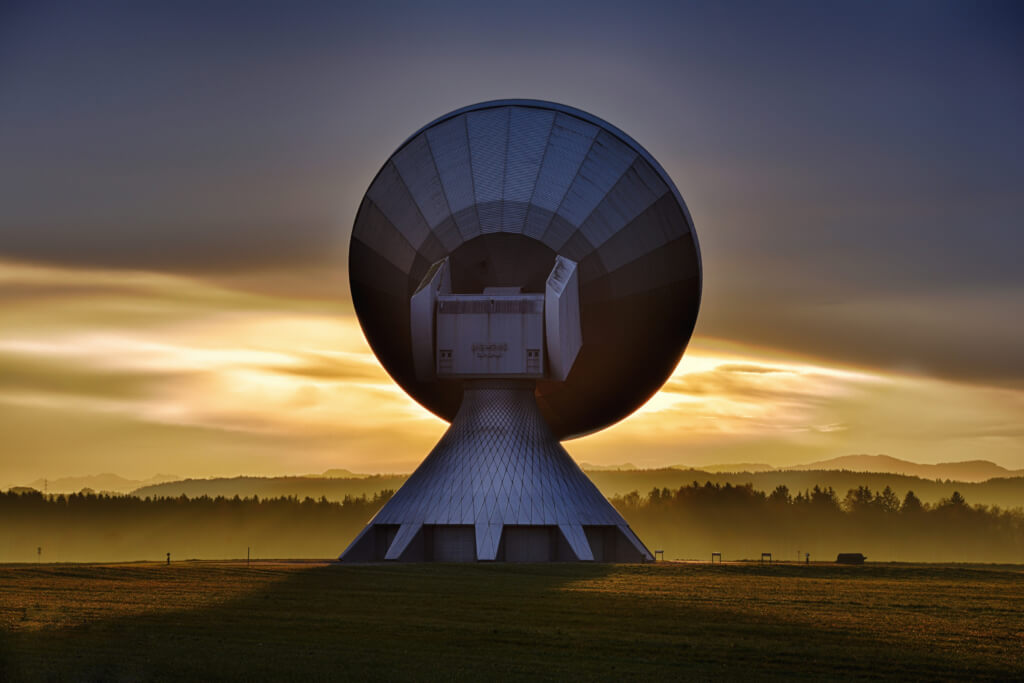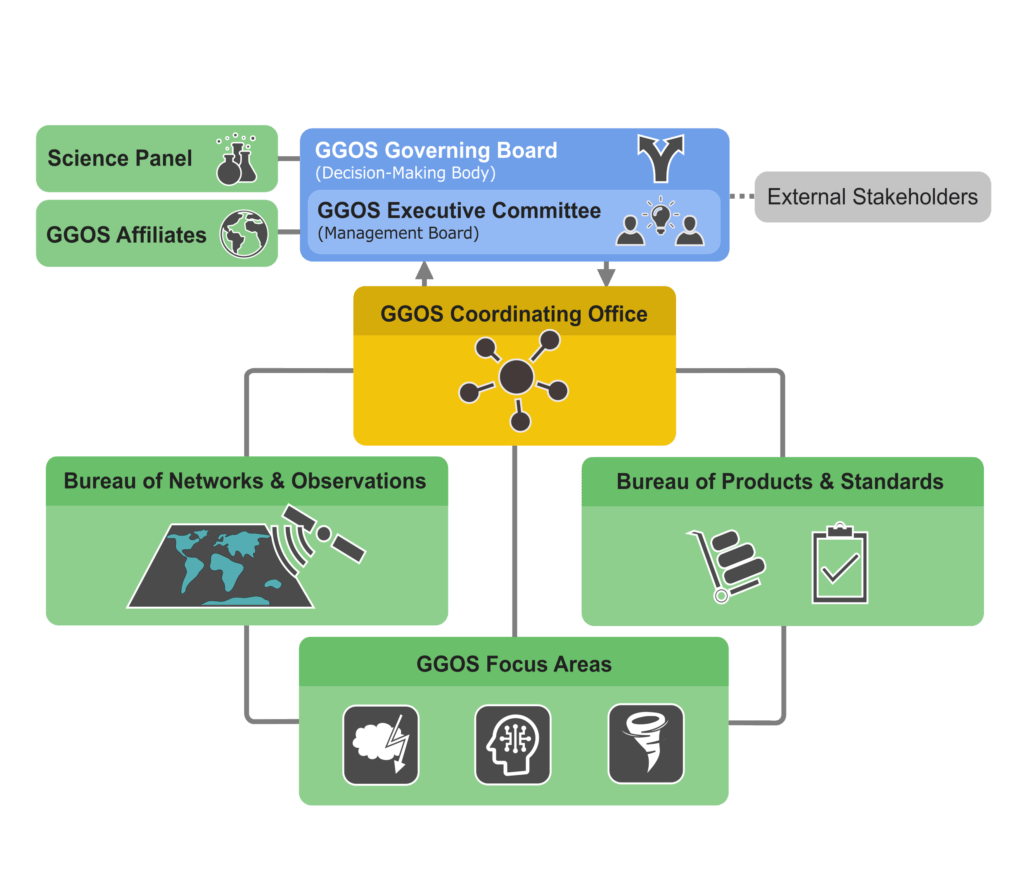The Dual Roles of GGOS
The meaning of the acronym GGOS is twofold: On the one side, it refers to the “observation system GGOS”, which comprises the infrastructure of a wide range of measuring instruments, satellite missions, data and analysis centers, and geodetic models and products. On the other side, it refers to the “organization GGOS”, which consists of committees, panels, bureaus, working groups, etc.
GGOS as an observing system
… relies on the geodetic infrastructure established and managed by a large international scientific community. This achievement has been facilitated by the International Association of Geodesy (IAG) and it is based on the voluntary commitment of national geodetic authorities, space agencies, research institutes, universities, and individuals.
For example, Global Navigation Satellite Systems (GNSS) or gravity and altimetry satellite missions are implemented and operated by national or space agencies, while GGOS facilitates utilization of these observations. Dedicated infrastructure such as the stations in the global tracking networks, the data and analysis centers, and even the components of the servicing organizations are provided on a voluntary and best-efforts basis.
The international cooperation fostered by IAG led to the establishment of a variety of technique-specific IAG Scientific Services to facilitate the global coordination of geodetic activities and to ensure the generation of high accuracy and reliable geodetic products to support geoscientific research. The IAG Services provide increasingly valuable observations and products not only for scientists but also for a diverse and growing number of non-scientific applications. GGOS is the observing system built upon the existing and future infrastructure provided by the IAG Services.
GGOS as an organization
… faces the challenge of ensuring, through interaction with relevant stakeholders, that geodetic infrastructure is available on a reliable and continuous basis. For this purpose, GGOS works together with the following IAG components:
- IAG Services: provide the infrastructure and products on which all contributions of GGOS are based
- IAG Commissions & IAG Inter-Commission Committees: provide expertise and support to address key scientific issues within GGOS
Internally, the organizational structure of GGOS (i.e., Bureaus, Committees, Science Panel, Focus Areas, Working Groups, etc.) focuses on crosscutting issues relevant for all IAG Services. Thus, GGOS acts as a unifying umbrella for the IAG Services, which integrates the observing systems for changes in the Earth’s shape, gravity field and rotation and improves internal consistency.
Externally, GGOS ensures visibility of the geodetic contribution to Earth observation and links the IAG Services to global Earth observation systems to deliver a consistent and integrated service to the users.





